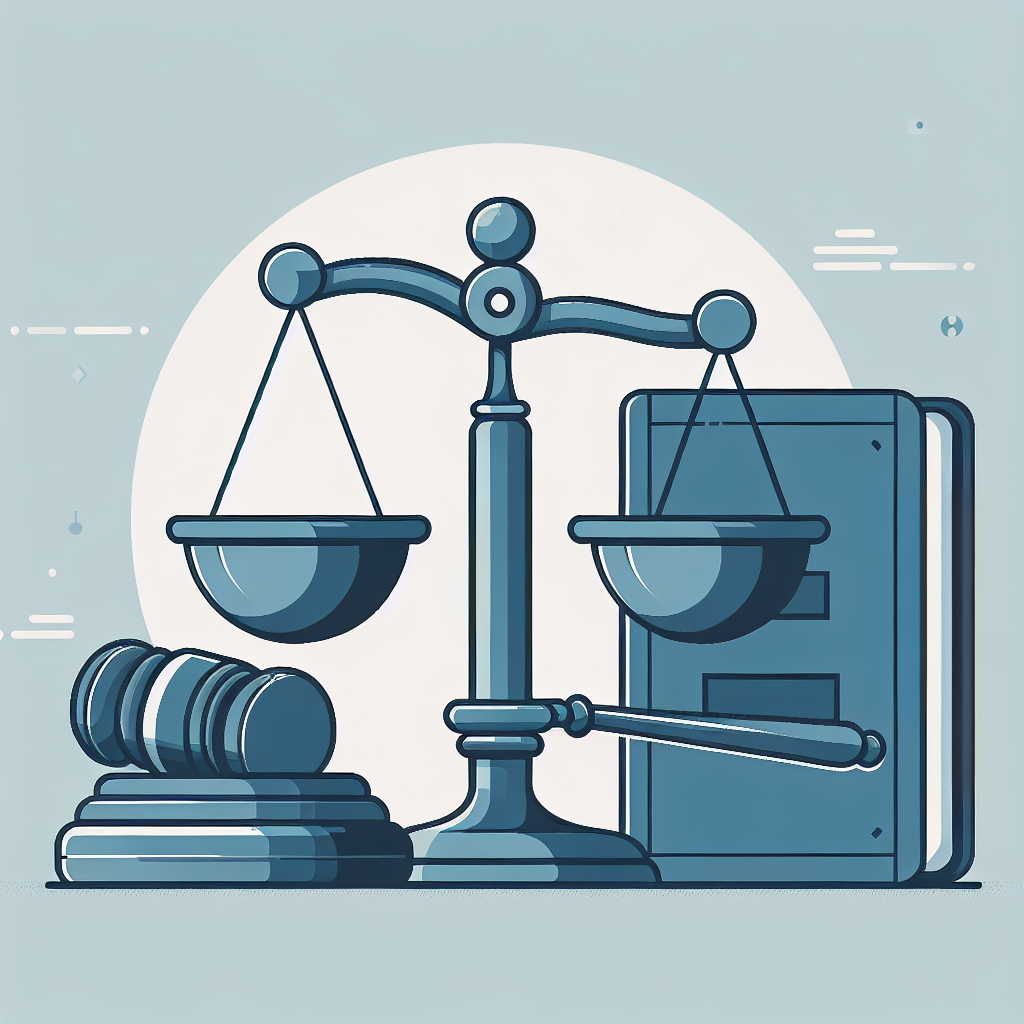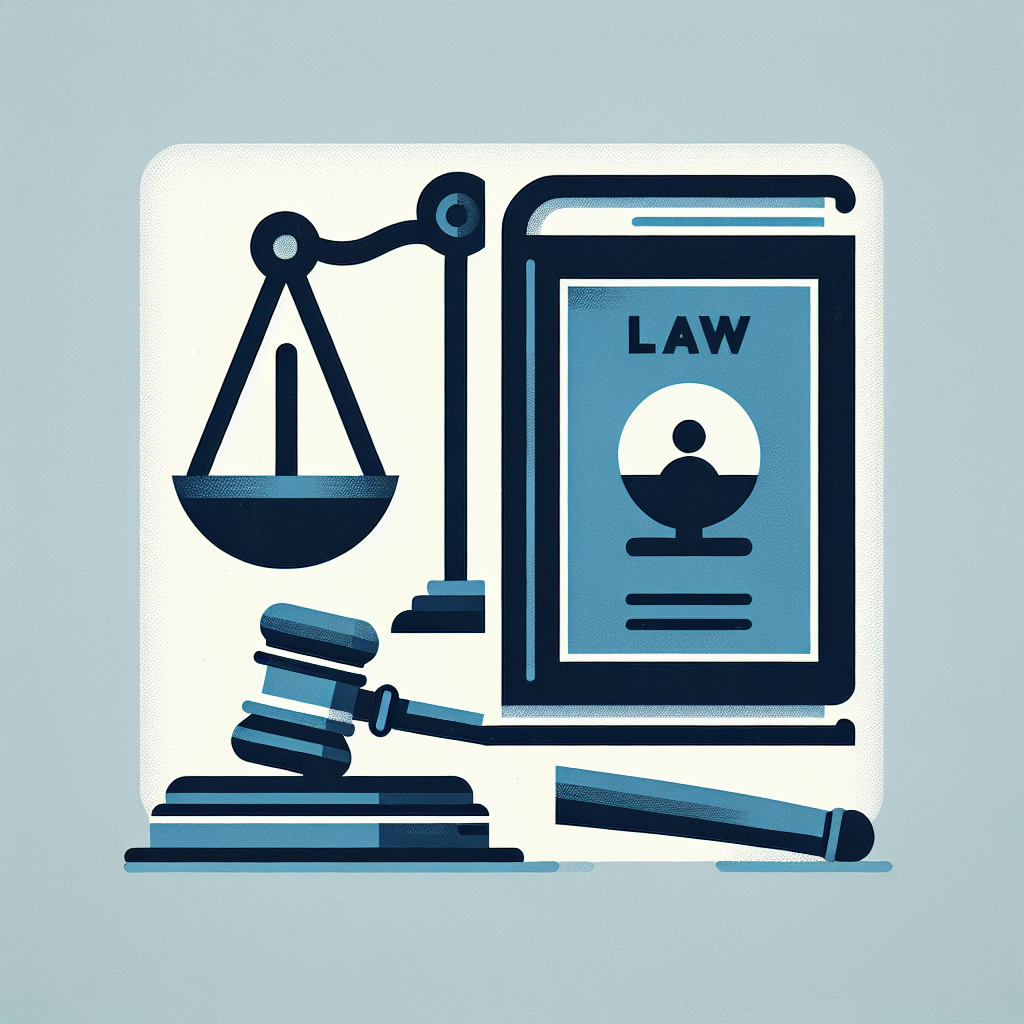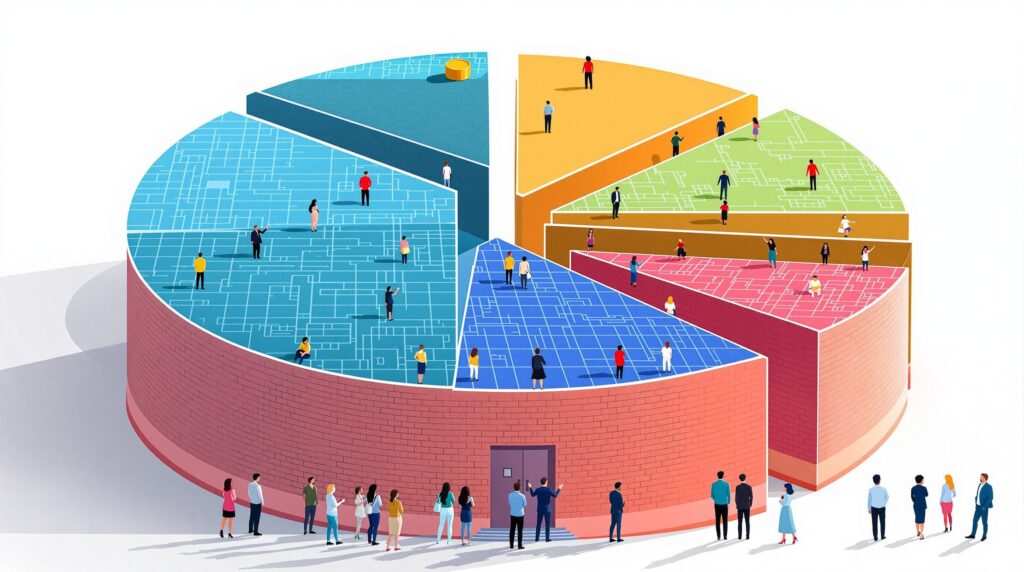[rev_slider alias=”slider-1″][/rev_slider]
Understanding Layer 1 Blockchains
Layer 1 blockchains form the bedrock of the broader blockchain ecosystem. They are the fundamental networks upon which other blockchain-based applications are built and are crucial to the decentralization and security of digital transactions worldwide. In exploring the architecture and primary functions of Layer 1 blockchains, it becomes evident how these foundational platforms support and stabilize various cryptocurrency systems and applications.
Key Characteristics of Layer 1 Blockchains
Understanding the essential characteristics of Layer 1 blockchains reveals why they are critical in the blockchain and cryptocurrency spectrum. Here’s a closer look:
- Decentralization and Security Features: Central to Layer 1 blockchains is the principle of decentralization. Unlike traditional banking systems that rely on central authorities, Layer 1 blockchains distribute data across a network of computers, reducing the risk of systemic failures and attacks. Security, therefore, forms a core aspect of these technologies. Through cryptographic techniques and consensus models, they ensure that the network achieves reliability and integrity without a centralized point of control.
- Consensus Mechanisms and Their Importance: The consensus mechanism is a fundamental aspect of blockchain technology. It’s the process through which all participants of the network agree on the validity of transactions. Common mechanisms include Proof of Work (PoW) and Proof of Stake (PoS), each with distinct features catering to different network needs. PoW, for instance, used by Bitcoin, involves solving complex mathematical problems, which, while secure, requires significant energy. On the other hand, PoS, adopted by networks like Ethereum 2.0, selects validators in proportion to their quantity of holdings in the network, offering energy efficiency and speed.
- Examples of Popular Layer 1 Blockchains: Bitcoin and Ethereum are the most recognized Layer 1 blockchains. Bitcoin, the first cryptocurrency, operates on a PoW model and focuses on peer-to-peer transactions. Ethereum, initially also on PoW, is transitioning to PoS to optimize transaction speed and energy efficiency. Other notable Layer 1 blockchains include Solana, which uses a hybrid PoS and unique Proof of History (PoH) model to achieve high speeds and low costs, and Cardano, which uses PoS but focuses more on a research-driven, peer-reviewed approach to development.
Layer 1 blockchains are not just platforms for cryptocurrencies; they are also platforms for innovation. Developers can build smart contracts, decentralized applications (dApps), and even other blockchains on these foundational layers. Thus, their functionality and importance span across multiple aspects of not only the financial sector but also other sectors looking to leverage decentralized solutions for improved efficiency and transparency.
As blockchain technology continues to evolve, the role and capabilities of Layer 1 blockchains are likely to become even more significant. They are fundamental to building a decentralized digital framework, and understanding these platforms is essential for anyone looking to engage seriously in the blockchain space.
The robust architecture and innovative consensus mechanisms of Layer 1 blockchains provide the necessary security and efficiency that foundational digital platforms require to transform global financial systems and beyond.
Insights into Layer 2 Solutions
Delve into Layer 2 solutions and understand how they operate to enhance blockchain scalability.
The Role of Layer 2 in Scaling Blockchains
Blockchain technology is on the brink of transforming our digital landscape, yet it faces significant scalability issues. Layer 2 solutions emerge as vital upgrades to address these challenges, working alongside the foundational Layer 1 blockchains to enhance scalability, speed, and transaction costs.
What exactly are Layer 2 solutions? They are additional protocols built on top of existing blockchain systems (Layer 1) to increase network capacity and reduce transaction times without compromising security.
Understanding the mechanics behind Layer 2 solutions requires a glance at their most common forms:
- State Channels: A means by which transaction operations can be executed off-chain while still maintaining the blockchain’s security assurance. Channels are ‘opened’ between participating parties, and transactions occur independently of the main chain until the channel is closed.
- Rollups: Solutions that execute transactions outside the main Ethereum chain (off-chain) but post transaction data on-chain. Rollups play a crucial role in enhancing throughput while ensuring the data availability required for decentralized security.
Advantages of Layer 2 over Layer 1
Why consider Layer 2 solutions when Layer 1 networks are foundational? The benefits are telling:
- Increased Transaction Throughput: Layer 2 solutions can process many transactions at a fraction of the time it would take on Layer 1.
- Reduced Gas Fees: Because transactions in Layer 2 solutions often occur off-chain, they avoid the gas fees that can clog and overburden the main chain during peak times.
- Enhanced Scalability: These solutions scale more effectively by handling transactions off the main chain, thereby relieving congestion and improving overall network performance.
Did you know? Rollups can potentially increase Ethereum’s capacity from approximately 15 transactions per second to over 1000 transactions per second.
Notable Layer 2 Solutions in the Market
Several Layer 2 solutions have gained prominence, each offering unique mechanisms to handle scalability and efficiency challenges:
- Lightning Network: Primarily used in Bitcoin, this network facilitates instant transactions and scales the capability of the blockchain to handle higher transaction volumes.
- Optimistic Rollups: They assume transactions are valid by default and only run computation, through a fraud-proof mechanism, if a transaction is questioned.
- zk-Rollups: Using zero-knowledge proofs, these rollups run computation off-chain and submit a validity proof to the chain, enabling high scalability and security.
In conclusion, Layer 2 solutions represent a pivotal development in blockchain technology, addressing crucial scalability and efficiency problems that Layer 1 solutions face. For businesses looking to implement blockchain, considering a combination of Layer 1 and Layer 2 technologies could ensure a balance of security, scalability, and operational efficiency.
[rev_slider alias=”text-call-cta”][/rev_slider]
Comparing Layer 1 and Layer 2: Use Cases
Understanding the practical applications and distinctions between Layer 1 and Layer 2 blockchain technologies can vastly improve decision-making for businesses and developers in the blockchain ecosystem. Let’s delve into the specific use cases and scenarios where each layer is most beneficial.
When to Use Layer 1 vs. Layer 2 Solutions
Blockchain technology’s promise in decentralization, transparency, and security has captivated industries ranging from finance to healthcare. However, as the adoption grows, so does the need for scalability and speed, leading to the strategic use of Layer 1 and Layer 2 solutions.
- Scenarios Best Suited for Layer 1:
Layer 1 blockchains are the foundation of any blockchain ecosystem, characterized by their ability to validate and finalize transactions independently. Industries focused on immutability and security often prefer Layer 1 solutions due to their decentralized nature. For instance, a government issuing digital identities on a blockchain would prioritize Layer 1 for its robust security and data integrity over scalability, ensuring that citizen data is permanently secure and unaltered.
- Ideal Circumstances for Layer 2 Implementations:
Layer 2 solutions thrive in environments that require high throughput and instantaneous transactions. Financial institutions dealing in high-frequency trading or remittance companies facilitating global payments can leverage Layer 2 solutions to enjoy the underlying security of the main blockchain while performing faster and cheaper transactions. A notable example includes payment channels that allow for real-time transaction settlements without congesting the main blockchain network.
- Industry-specific Case Examples:
- Supply Chain: Layer 1 blockchains ensure transparency and traceability in supply chains, vital for verifying the authenticity of goods and preventing fraud. Businesses can trace a product from its origin to the consumer, ensuring the integrity of their supply chain.
- Gaming: The gaming industry often adopts Layer 2 solutions to enhance user experience by allowing fast and numerous microtransactions for in-game assets, which would be inefficient and costly if recorded individually on a traditional Layer 1 blockchain.
In summary, the choice between Layer 1 and Layer 2 solutions is largely influenced by the specific needs and challenges of a business or industry. Layer 1 provides unmatched security and decentralization, essential for applications where data integrity is paramount. In contrast, Layer 2 scales blockchain’s capability by handling high volumes of transactions efficiently, making it ideal for high-speed transaction environments.
As we explore these layers further, it becomes clear that both Layer 1 and Layer 2 blockchains are not only necessary but complementary. Each plays a critical role in the broader context of blockchain’s future, especially as we push the boundaries of what these technologies can achieve in various industrial, social, and economic spheres.
The Future of Layer 1 and Layer 2 Blockchains
As we navigate the complexities of blockchain technology, the evolution of both Layer 1 and Layer 2 blockchains continues to shape the future of this industry. Understanding the potential developments and long-term implications of these technologies will help us grasp how digital infrastructure may evolve to meet increasing demands for scalability and efficiency.
Emerging Trends and Innovations
In the ever-evolving world of blockchain technology, both Layer 1 and Layer 2 solutions play pivotal roles. Here, we explore the emerging trends and innovations that could define their trajectories in the near future.
- Future Scalability Solutions: Scalability remains a critical challenge for blockchain technologies. For Layer 1, advancements may involve enhancements in consensus algorithms which increase transaction throughput without compromising security. In contrast, Layer 2 solutions are leveraging off-chain transaction handling to reduce the load on the main blockchain, hence potentially offering infinite scalability solutions like rollups and state channels.
- Interoperability between Layer 1 and Layer 2: Enhancing interoperability between these layers is crucial for a seamless blockchain experience. Innovations are likely to focus on creating more flexible protocols that allow for smoother transactions between Layer 1 and Layer 2 solutions, reducing complexities and enhancing user experience. This evolution could drive greater adoption across varied blockchain applications, from finance to healthcare.
- Predicted Market Shifts and Technology Adoption: As both technologies mature, we can anticipate significant shifts in market dynamics. Layer 2 solutions might become more predominant in scenarios requiring high transaction throughputs, such as gaming and microtransactions. Meanwhile, Layer 1 could continue to hold sway in areas demanding absolute security and decentralization, like financial services and asset management. The ongoing development of these layers will likely attract diverse industries, fostering broader technology adoption and integration.
Understanding these potential developments provides insights into the strategic decisions and investments that stakeholders in the blockchain industry might need to make. As we look towards the future, the continued innovation and integration of Layer 1 and Layer 2 blockchains will be paramount in overcoming existing challenges and unlocking new possibilities in the digital landscape.
“The harmonious integration of Layer 1 and Layer 2 solutions will define the future trajectory of blockchain technology, enabling a scalable, efficient, and secure digital infrastructure.”
Both Layer 1 and Layer 2 technologies are not just complementary; they are evolving to address the different needs of the blockchain ecosystem. Their co-evolution will likely be marked by a move towards more sophisticated, user-oriented solutions that cater to an expanding spectrum of applications, driving forward the blockchain revolution in numerous industries.
[rev_slider alias=”schedule-consultation-btn”][/rev_slider]


Explore Our Other Practice Areas and Related Pages
| Practice Area 1 in Jara | Practice Area 5 in Jara |
| Practice Area 2 in Jara | Practice Area 6 in Jara |
| Practice Area 3 in Jara | Practice Area 7 in Jara |
| Practice Area 4 in Jara | Practice Area 8 in Jara |
List of Top-Rated Layer 1 and Layer 2 Blockchain Solutions Attorneys Serving Jara
Choosing the right legal representation is crucial when engaging with blockchain technology disputes. A skilled Layer 1 and Layer 2 blockchain solutions attorney ensures you’re well-prepared to navigate these complex fields.
- Attorney John Doe – Specializing in Layer 1 Solutions
- Attorney Jane Smith – Expert in Layer 2 Innovations
Hear From Our Satisfied Layer 1 and Layer 2 Blockchain Solutions Clients
Our commitment to excellence in Layer 1 and Layer 2 blockchain solutions law is demonstrable through our clients’ positive feedback, confirming our status as one of the top-rated firms in Jara.

[rev_slider alias=”slider-3″][/rev_slider]
[rev_slider alias=”slider-6″][/rev_slider]
Contact Our Layer 1 and Layer 2 Blockchain Experts
Deciding between Layer 1 and Layer 2 solutions can be complex. Whether you are developing new applications, optimizing existing systems, or just curious about how blockchain technology can benefit your business, our experts are here to guide you. At Jara, we combine legal expertise with a deep understanding of Layer 1 and Layer 2 blockchain technologies to provide comprehensive advice tailored to your industry’s needs.
Why choose us?
- Industry-Leading Expertise: Our team stays at the forefront of blockchain technology, consistently analyzing the latest trends and legal implications.
- Customized Solutions: We understand that each business is unique. That’s why we focus on providing personalized legal solutions that match your specific requirements.
- Proven Track Record: We’re not just experts in the field; we are also recognized by our peers and industry leaders. Check out some of our recent accolades and see why we’re trusted in the blockchain community:
To discuss how our team can assist you with your blockchain needs, please contact us at [email protected] or call us at 000-000-0000. Don’t wait to strengthen your blockchain strategy with expert legal advice – call Jara today.
Author Bio
Jeremy Clarkson, a seasoned technology author with over a decade of experience, digs deep into the intricate world of blockchain technology. With a keen perspective on emerging tech trends, Jeremy simplifies complex concepts for his readers. His extensive knowledge not only spans the breadth of Layer 1 and Layer 2 solutions but also delves into how these technologies drive innovations and solve real-world problems. Through his insightful analyses, he guides both novices and experts towards understanding the necessity and functionality of each layer in the blockchain ecosystem.
















